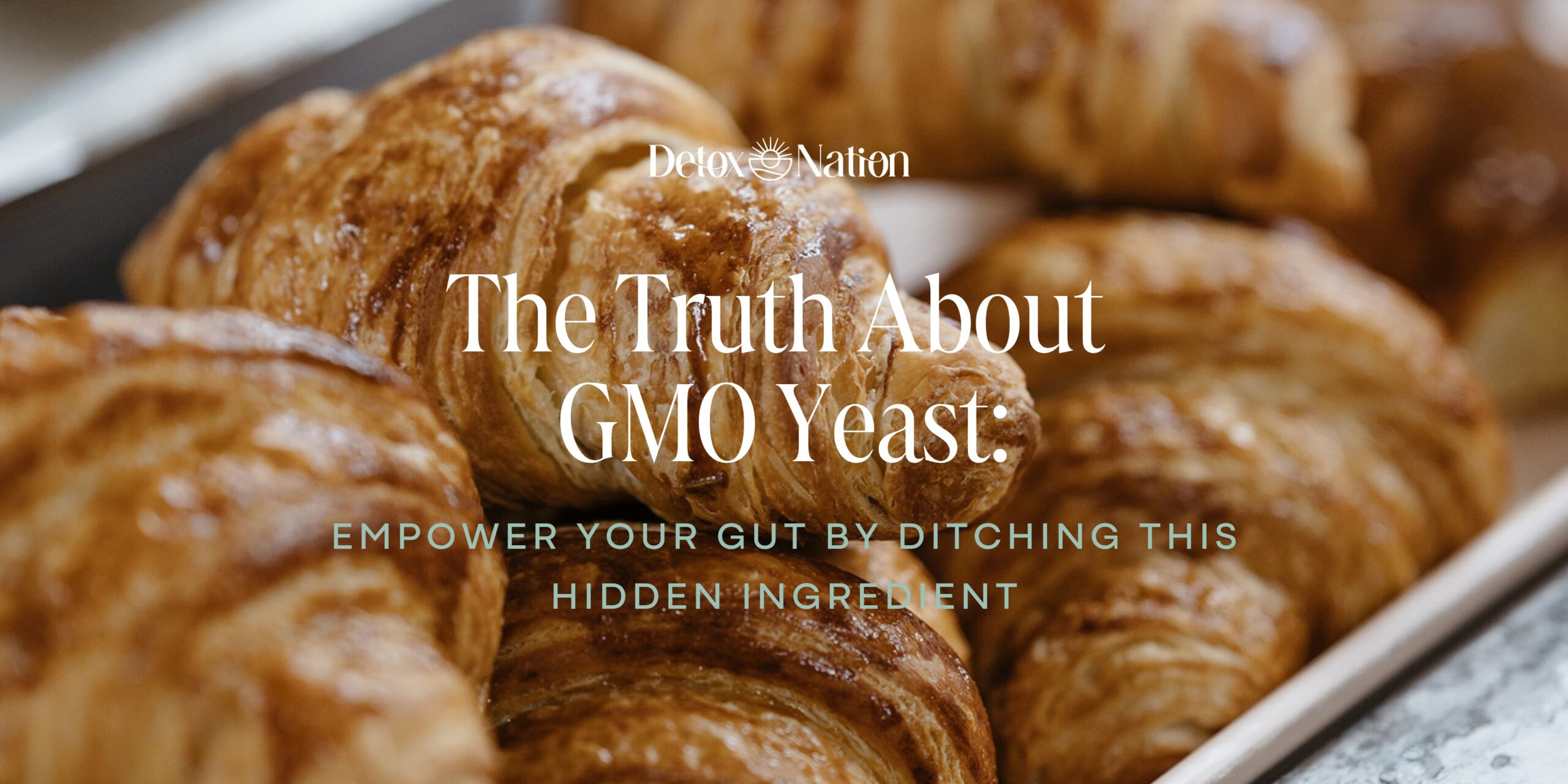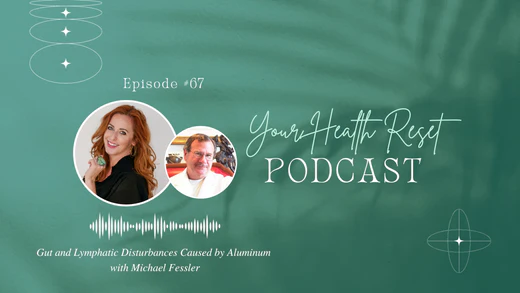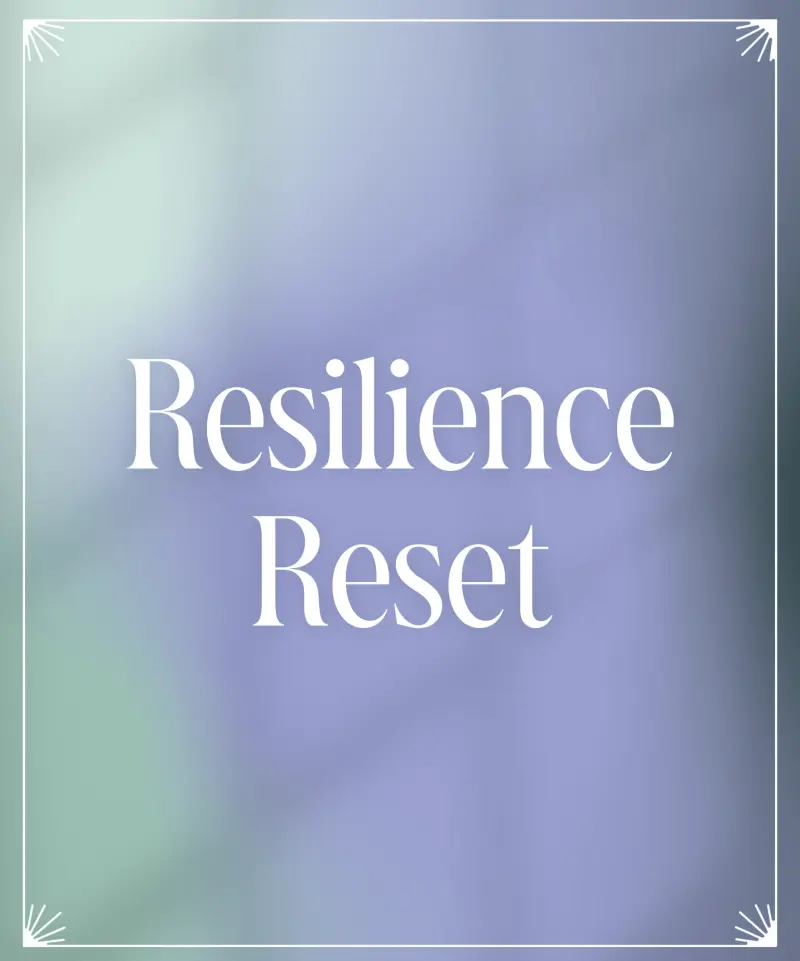Beer bloat, brain fog, and supplement backlash? GMO yeast, including thiolized yeast and omega strains, may be disrupting your gut and immune system.
You’ve read the labels, you’ve swapped the snacks, you’re the one ordering “just olive oil and lemon, please” while your friends dive into apps.
And still, your gut’s in knots, your brain’s in a fog, and you’re somehow reacting to foods that were totally fine last month.
If you’ve ever thought, “What am I missing?”—you might want to look a little closer at one of the most under-the-radar ingredients in our modern food system: genetically modified yeast.
This isn’t your grandma’s baking yeast. We’re talking about yeast that’s been edited at the genetic level—usually using CRISPR or similar biotech—to crank out compounds that don’t naturally occur in nature.
Companies use it to mass-produce flavors like vanillin, vitamins like B12, and even blood-like proteins (yes, heme) in plant-based meats like the Impossible Burger.
Why?
Because it’s cheap, scalable, and conveniently easy to call “natural” on a label (18).
Even though these Franken-yeasts are technically “Generally Recognized As Safe” (GRAS) by the FDA, that doesn’t mean we have any long-term safety data on how they affect real humans with real bodies and real chronic conditions.
Most studies are either industry-funded or focus on production yield, not the downstream health effects of eating these compounds daily.
In this article, we’ll break down what GMO yeast is, how it gets into your body, what it might be doing once it’s there, and what you can do to stop unknowingly feeding the chaos.
Key Takeaways
- GMO yeast is hiding in plain sight.
- This is a food experiment you didn’t consent to.
- Sensitive bodies are not broken—they’re early warning systems.

Before we start, there’s something I have to say.
There isn’t much independent research on GMO yeast, and there’s a reason for that.
When billion-dollar companies are the ones funding, patenting, and profiting from these Franken-microbes, the last thing they want is an unfiltered spotlight.
The FDA regulates biotechnology products with the USDA and the EPA, but at best, they’re doing a surface-level job. Most of the “safety” data we have comes from industry-backed studies focused on efficiency and output, not long-term human health or chronic symptoms, so if you’re waiting for a PubMed avalanche to confirm what your gut is already telling you, you might be waiting a long time.
This is where common sense and self-trust must take the wheel. If your body is screaming after that “plant-based” meal or buzzing after your vitamin drink, that’s data.
Your symptoms are the research.
Your body doesn’t need peer review to know what’s safe for it. You already know—you’ve just been trained to doubt yourself.
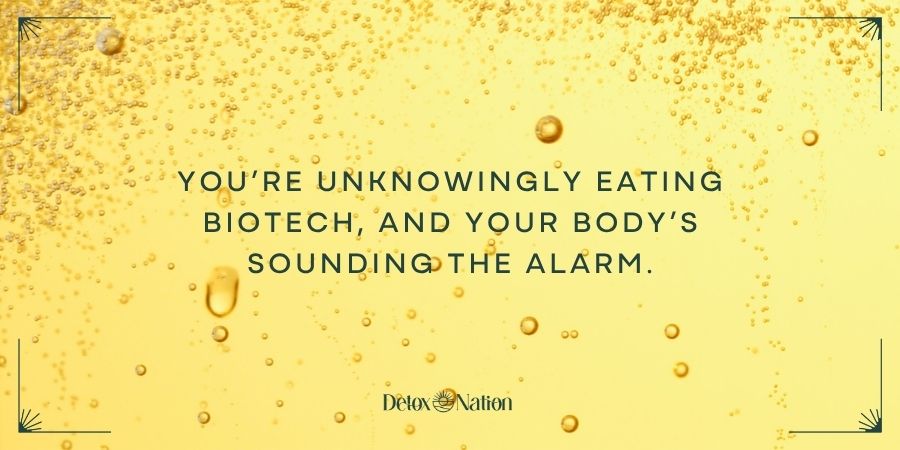
What Is GMO Yeast and How Is It Made?
Yeast, in its natural form, is a type of fungus. It’s been our kitchen sidekick for thousands of years—bubbling bread, brewing beer, and doing a decent job of minding its own business (10, 18). But in the last few decades, yeast has had a bit of a makeover.
Scientists started using gene-editing tools like CRISPR to reprogram yeast DNA. Suddenly, yeast isn’t just rising dough, it’s pumping out fake vanilla flavor, lab-made vitamins, and even synthetic proteins that mimic animal tissue (2, 5, 6, 9, 11, 12, 15, 17, 18).
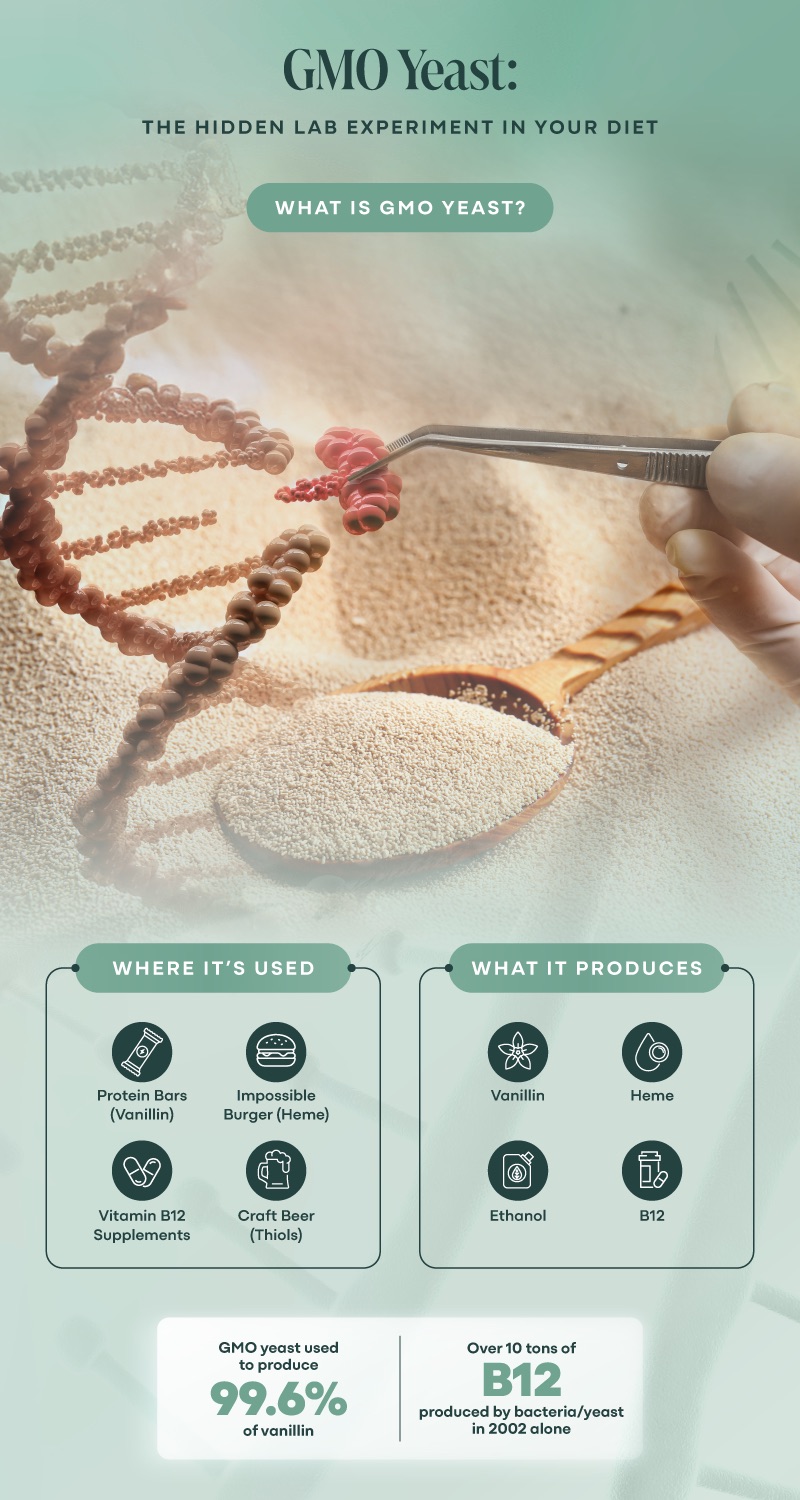
Here’s where it shows up:
- Food production: That vanilla in your protein bar? It might not be from a bean. It could be GMO yeast that’s been engineered to create vanillin (5, 12).
- Meat alternatives: Ever tried an Impossible Burger? The “blood” in it comes from GMO yeast producing a molecule called leghemoglobin (6, 15). This molecule has 46 patents on it – yummy (16)
- Supplements: Many vitamin B12 or “yeast-derived” probiotic products are made using GMO strains created for mass output and shelf stability (9). In 2002, over 10 tons of B12 were produced per year by bacteria, but the strains were difficult to handle (9, 11).
- Fermentation tech: It’s used in brewing, baking, even ethanol production—but not all of it stays in the industrial zone. Some ends up in our gut. (You may have heard of “thiolized yeast” or “Omega yeast.”
While traditional yeast is usually pretty benign—or even beneficial—these modified strains behave differently.
GMO yeasts were designed for efficiency, not harmony with your biology.
That’s a problem if you’re already sensitive, inflamed, or dealing with a gut that’s one wrong bite away from full-on mutiny.
You’re unknowingly eating biotech, and your body’s sounding the alarm.

How GMO Yeast Is Engineered
A thorough discussion of all the genetic technologies is outside the scope of this article. But here’s a brief rundown of the various ways yeast can be manipulated in a lab: (18)
Direct Genetic Engineering (Transgenic or Cisgenic Modifications)
These involve deliberate changes to DNA through molecular techniques (18):
- Recombinant Protein Expression: Soy leghemoglobin made using genetically engineered yeast to express a foreign protein (6).
- Category: Recombinant DNA / Transgenic.
- Genetic Modification: Broad category including insertion, deletion, or substitution of DNA sequences.
- Category: Direct genetic engineering (e.g., CRISPR, plasmid insertion). This is the most documented process (18), for example:
- 1989: Sequencing of Saccharomyces cerevisiae chromosome III initiated
- 1992: Chromosome III sequencing completed
- 1996: Entire S. cerevisiae genome released
- 2014: Complete synthesis of the first eukaryotic chromosome (III)
- 2016: S. cerevisiae modified to synthesize pharmaceuticals such as opioids and cannabinoids (8)
- Category: Direct genetic engineering (e.g., CRISPR, plasmid insertion). This is the most documented process (18), for example:
- CRISPR/Cas9 and Other Gene Editing Tools: Used to enhance metabolic pathways for higher compound yield. CRISPR is used to deactivate or enhance specific genes in S. cerevisiae to optimize the production of amino acids or aromas.
- Category: Targeted genome editing / Direct genetic engineering
- Self-Cloning: Using DNA from the same species or closely related species without introducing foreign genes.
- Category: Cisgenic modification
- Horizontal Gene Transfer (HGT): Movement of genetic material between unrelated organisms (e.g., bacteria to yeast).
- Category: Transgenic, natural or engineered gene flow
- Global Transcription Machinery Engineering (gTME): Engineering transcription factors or RNA polymerase subunits to reprogram overall gene expression.
- Category: Synthetic biology / Transcriptional reprogramming
Random or Semi-Random Genetic Alteration
These don’t precisely target genes but induce mutations or recombine existing genomes (18):
- Mutagenesis by Insertion of Transposons: Mobile DNA elements are inserted to disrupt genes or alter expression.
- Category: Random mutagenesis
- Directed Evolution: Cycles of mutation and selection to evolve desirable traits without knowing the specific gene sequence.
- Category: Laboratory evolution / Random mutagenesis
Hybridization and Sexual Reproduction-Based Techniques
These rely on combining entire genomes or leveraging natural reproduction pathways (18):
- Protoplast Fusion: Fusing cells (often of different species) to combine genomes in organisms without sexual reproduction.
- Category: Somatic hybridization
- Genome Shuffling / Sexual Reproduction: Combining genetic material from two parents to produce novel genotypes.
- Category: Hybridization / Evolutionary engineering
- Breeding: Traditional or selective breeding over generations to enhance traits.
- Category: Conventional genetic manipulation (non-GMO)
Consider this statement by a researcher in 2014: “Modern technologies enable changing the DNA code in almost any possible way – including the transfer of DNA between different species, genera, or kingdoms, and the construction of completely artificial, man-made DNA fragments or even complete chromosomes and genomes.”
Then they put this crap in your food supply – all without your knowledge or consent.
(And that was over ten years ago – it’s only become more prevalent since then!)
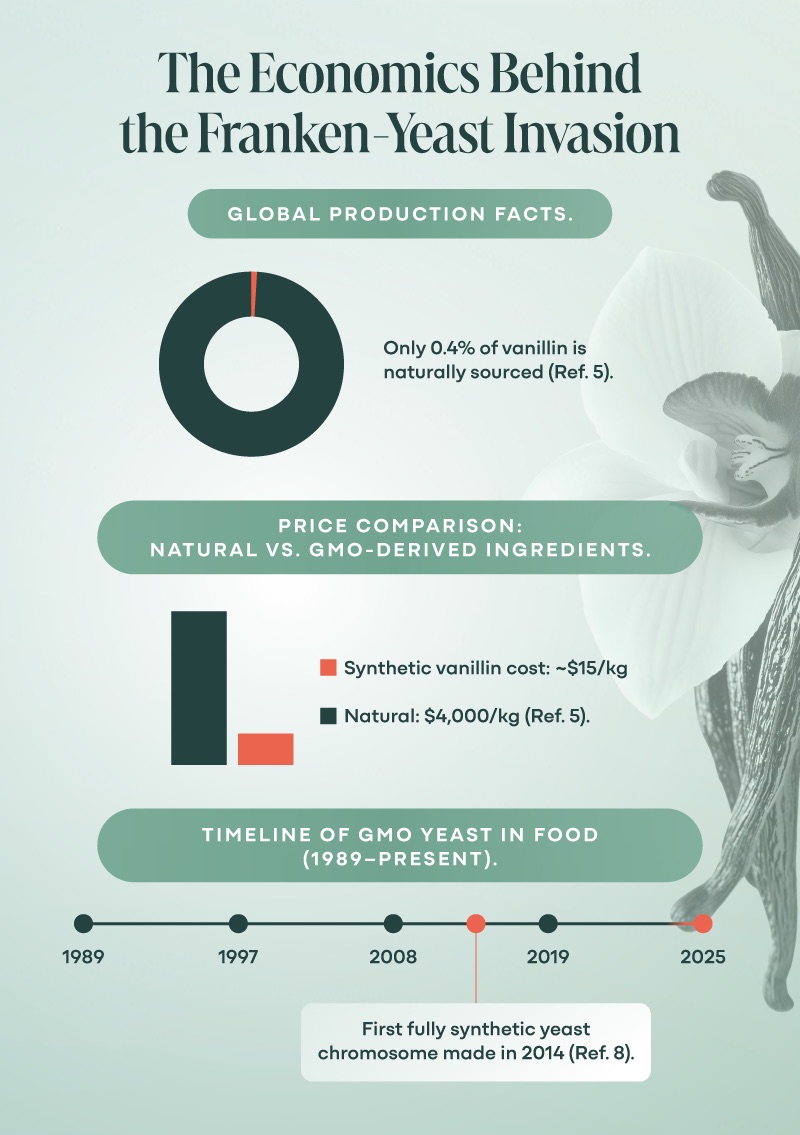
Why Is It in So Many Products? (Follow the Money)
Let’s be real: GMO yeast was created to solve problems for manufacturers—not for you.
Here’s why it’s everywhere (and why companies are banking on you not noticing):
1. It’s Dirt Cheap
Producing vanillin from vanilla beans? Labor-intensive and pricey (5).
Engineering yeast to generate vanillin in a steel vat? Way cheaper.
As of 2009, only about 0.4% of all vanillin is produced from vanillin pods, at a cost of up to $4,000 per kilogram (5). Compared to $15 per kilogram for vanillin-flavored yeast poop (5).
Companies figured out that this could replace natural ingredients at a fraction of the cost—no soil, no sunlight, no harvest seasons, no unpredictable supply chains (5, 18).
The result? You get “natural flavoring” made in a lab, and Big Food gets to slash costs and protect profit margins (12).
Win-win, unless you’re the human body on the receiving end.
How about the tropical fruit aromas unleashed in beer fermentation when the thiolized version is used early in the brewing process? These brewing strains can biotransform compounds found in malt and hops to unleash thiols: flavor- and aroma-active compounds reminiscent of grapefruit and other tropical fruits.
Tasty on the palate, but can be devastating for your health!
2. It Scales Like a Dream
Modified yeast doesn’t need to be grown on a farm.
It’s made in bioreactors—sterile, controlled, and scalable to millions of gallons (15).
That’s why companies love it: they can meet global demand for a product (like a flavor or vitamin) without touching a plant or an animal.
This also means that once a strain is modified successfully, it can be used to mass-produce ingredients for dozens, sometimes hundreds, of products across categories.
How We Can Help
Guiding people to reclaim their health and vitality is our greatest joy. Our entire practice is dedicated to supporting you to be who you really are, at home in your body, because your body is able to heal itself.
Book a Call3. It Sounds Healthier Than It Is
“Fermentation-derived.” “Bio-identical.” “Vegan heme.”
These terms sound science-y and safe. They sell.
But they’re often code for “produced by genetically engineered microorganisms” that you’ll never see listed on the label.
The Impossible Burger is a perfect example. The ingredient that gives it that “bleeding burger” effect is called soy leghemoglobin (SLH), made by GMO yeast. It’s literally a lab-made blood mimic, and it’s been flagged by food safety groups for insufficient testing (2, 6, 15).
SLH is genetically engineered from soy and the DNA of Pichia pastoris (2, 6, 15). The yeast itself is grown in a chemical soup of industrial ingredients (15). A 2018 study reported that the SLH product produced is only 73% pure (6, 15). “The rest is made up of 46 additional yeast proteins, some of which are unidentified. None have been assessed for safety by the Company.” (15)
What the…?
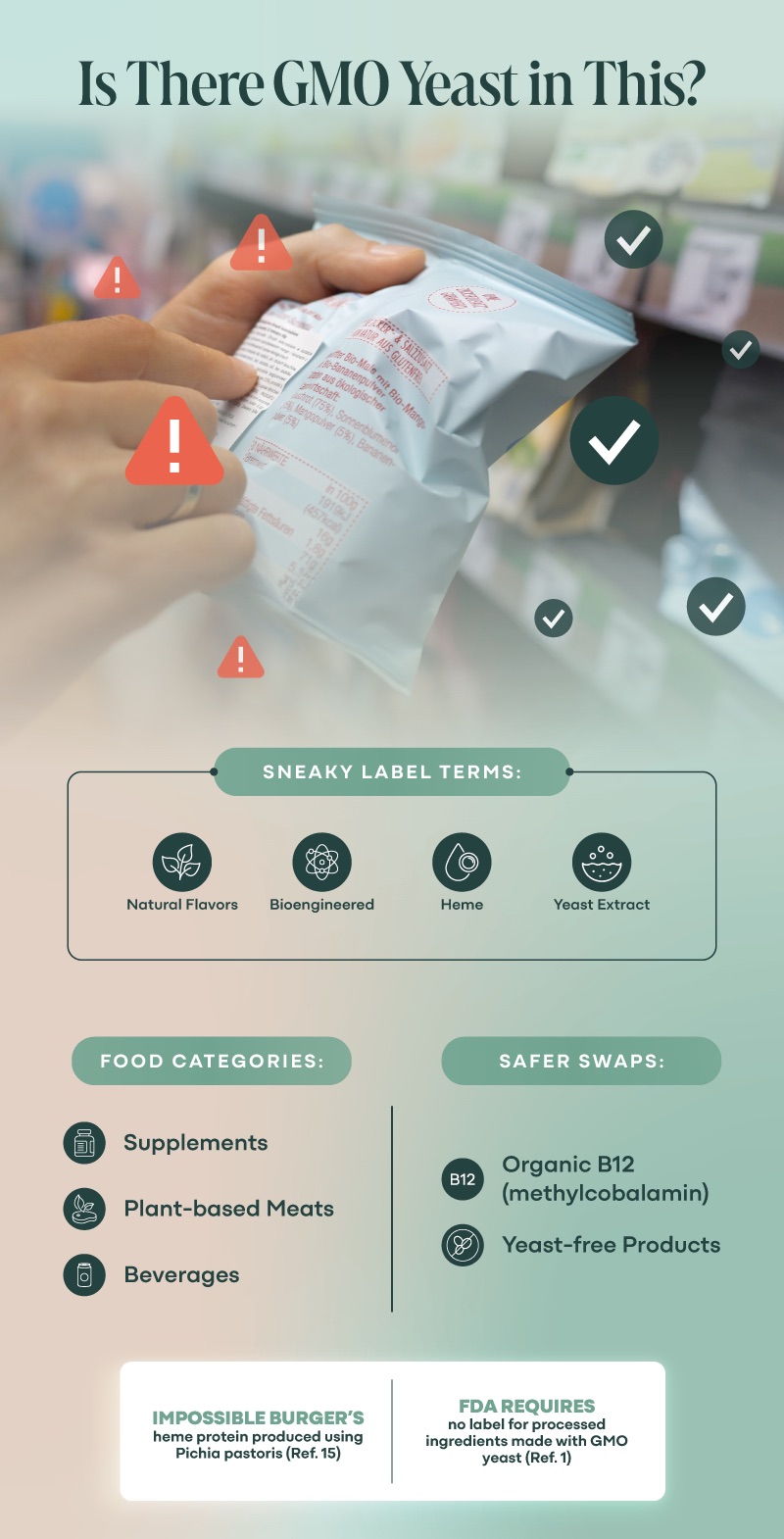
4. It Tricks the Label
This one stings a little: Because GMO yeast is used to produce an ingredient but isn’t always in the final product in its living form, companies can bypass labeling laws (1). That means even certified non-GMO foods might contain ingredients made by GMOs—just not GMOs themselves.
Your energy drink’s B12?
Possibly made by GMO yeast.
That “yeast extract” in your gluten-free soup?
Same story.
And unless a product is both organic and non-GMO verified, you have no real way of knowing.
This is where your detective work matters.
If you feel like you’re reacting to “healthy” products but can’t figure out why, look closer.
Your gut might be doing what your food label won’t—telling you the truth.
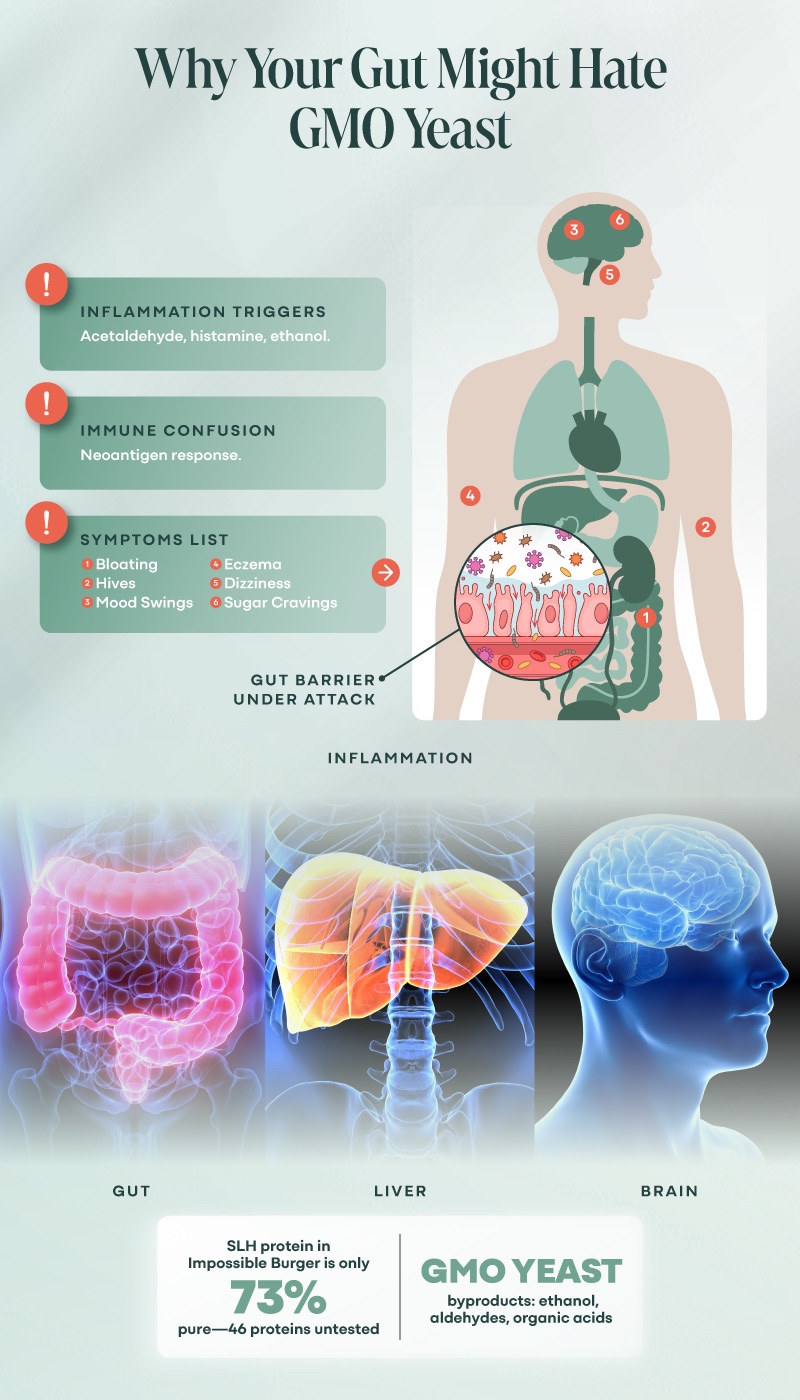
Health Impacts: Why Your Body Might Not Be a Fan
If you’ve got a history of chronic symptoms, gut issues, or neuroinflammation, GMO yeast could be one of those hidden inputs keeping you in a constant state of “What now?”
Here’s how these engineered organisms may be throwing off your internal terrain:
1. Allergic Reactions & Immune Confusion
When GMO yeast is programmed to create novel proteins—like synthetic heme or engineered B vitamins—your immune system may look at those proteins and say, “We’ve never seen that before… should we panic?”
This creates what’s called a neoantigen response: your immune system reacting to something that technically isn’t foreign to the food industry but is foreign to your biology.
For people with:
- Autoimmune conditions
- Mast Cell Activation Syndrome (MCAS)
- Leaky gut
- Histamine intolerance
- Heavy Metal Toxicity
- Mold Toxicity
- Exposure to industrial chemicals
…these kinds of immune overreactions can spiral into flares, food sensitivity explosions, or systemic inflammation (21).
2. Toxic Byproducts & Mycotoxins
All yeast (modified or not) produces byproducts. That’s normal, but GMO yeast can be unpredictable.
It may overproduce metabolites like:
- Ethanol (alcohol)
- Histamine
- Acetaldehyde (a known mitochondrial toxin)
- Fusel alcohols
- Organic acids
And those byproducts can inflame the gut, stress the liver, and trigger histamine or neurological symptoms (24).

3. Gut Microbiome Disruption
These engineered strains don’t always behave like native yeast (also called feral yeast, which makes me picture microscopic yeast cells with huge fangs). If they make their way into your body, logic tells us they may:
- Outcompete beneficial microbes
- Feed opportunistic pathogens like Candida albicans
- Interfere with gut barrier repair
- Alter short-chain fatty acid (SCFA) production, which affects everything from brain function to blood sugar
This shift in microbial balance—aka dysbiosis—can be subtle at first. Then, seemingly out of nowhere, you’re bloated, brain-fogged, and reacting to everything you eat.
While there are numerous studies on the impact of bacterial alterations in your gut, there are fewer to assess changes in the mycobiome (3, 20).
4. Mitochondrial Interference
Some byproducts of GMO yeast fermentation (like acetaldehyde, oxalates, or excess histamine) can mess with your mitochondria—the little energy factories in your cells.
For people with chronic fatigue, long COVID, mold illness, or methylation defects (hello, MTHFR mutations), this extra oxidative stress can push your mitochondria into shutdown mode.
Fatigue, brain fog, and unrefreshing sleep aren’t character flaws—they’re cellular distress signals (22).
5. Horizontal Gene Transfer (HGT)
In certain conditions—like when the gut barrier is compromised—there’s a theoretical risk that engineered DNA from GMO yeast could be picked up by other microbes in your gut.
This process is called horizontal gene transfer (HGT).
HGT occurs when genetic material crosses cell membranes and is incorporated into the recipient’s genome. This genetic change is then inheritable by future generations (7).
HGT has been a large part of the evolution of almost every organism, but this process occurs over hundreds of thousands of years in nature (7).
Now, we’re accelerating this process in labs with no regard for future consequences.
While it’s rare, it’s been documented in bacteria exposed to genetically engineered organisms in lab and agricultural settings (7).
And while we don’t have large-scale studies in humans yet (because of course we don’t), this risk is something researchers continue to flag—especially for immunocompromised or gut-damaged individuals.
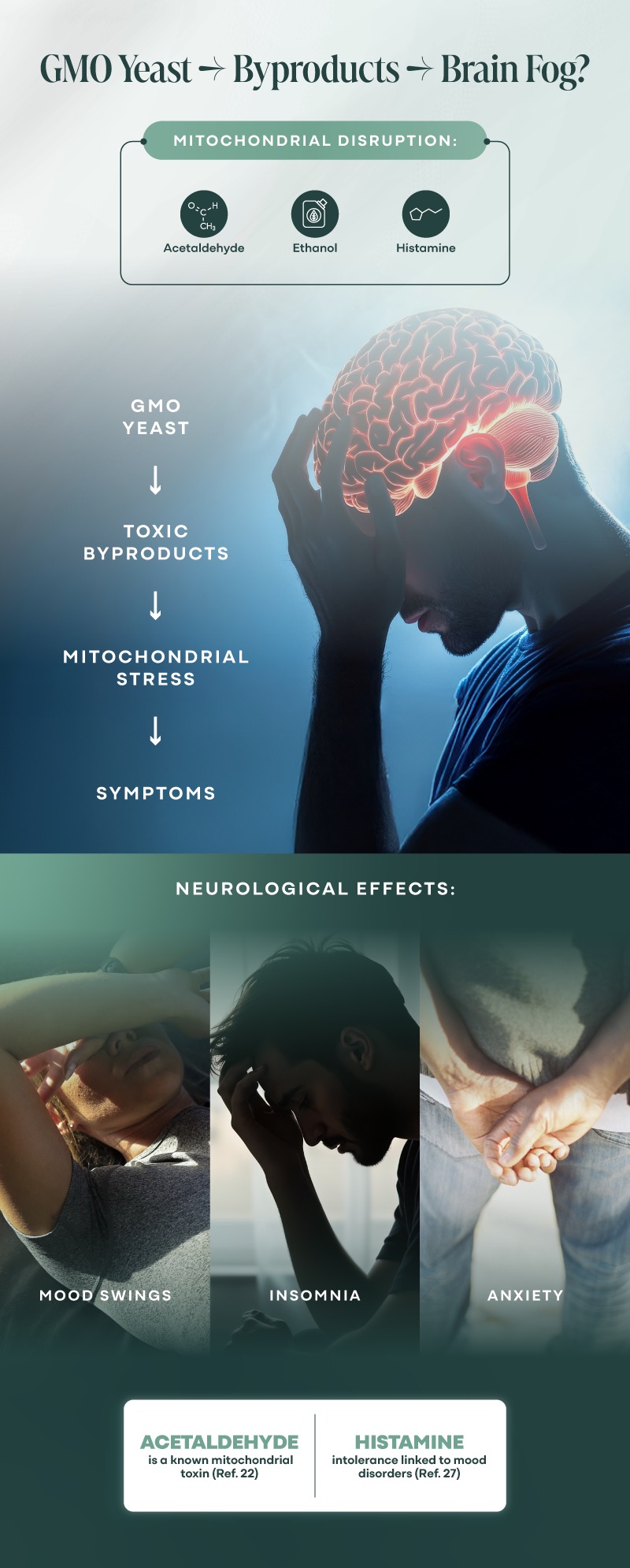
Signs Your Body Might Be Reacting to GMO Yeast
You won’t find “GMO yeast sensitivity” as a checkbox on any standard intake form.
But you will find its fingerprints all over the symptom lists that stumped your last three doctors.
Here are the top signs your body might be saying, “This biotech ingredient is not working for me.”
1. Skin Freakouts
- Rashes or hives that flare unpredictably
- Eczema, rosacea, or acne that won’t resolve
- Flushing after eating or using supplements
Skin is often the first place histamine overload or immune dysregulation shows up—and GMO yeast byproducts like histamine, ethanol, and aldehydes can pour gasoline on the fire (27).
2. Gut Distress (Despite All Your “Clean Eating”)
- Bloating or distension after meals
- Loose stools or constipation that cycles
- New or worsening food sensitivities
This is classic gut dysbiosis—especially if your symptoms are worse with fermented or processed foods.
GMO yeast can mess with microbial balance, feeding Candida or crowding out beneficial strains (20).
3. Brain Fog and Mood Swings
- Trouble concentrating or word-finding
- Feeling “disconnected” or spaced out
- Sudden dips into anxiety or irritability
These are often tied to mitochondrial stress and neuroinflammation.
When GMO yeast produces byproducts your liver can’t clear quickly, the result is toxic overload and impaired neurotransmitter function (28).

4. Sinus Pressure, Headaches, or Dizziness
- Headaches that feel like a “band” around your head
- Sinus congestion or facial pressure with no infection
- Lightheadedness or vertigo episodes
Histamine overload and Vagus nerve dysregulation can trigger these exact symptoms—especially in people with mast cell issues or mold exposure history (25).
5. Weird Reactions to Supplements or “Healthy” Foods
- Tingling, itching, or racing heart after a new supplement
- Reactions to B vitamins or “fortified” foods
- Feeling wired or inflamed after a “plant-based” meal
You’re not being dramatic. If it’s made with GMO yeast, your body might be reading it as a red alert—especially if you’ve got existing gut or immune vulnerabilities.
6. Feeling Tired and Wired at the Same Time
- Can’t fall asleep or stay asleep
- Rest doesn’t feel restorative
- You’re tired, but your body feels amped or anxious
This is often a nervous system issue tied to chronic inflammation and mitochondrial exhaustion.
And remember—some strains produce compounds that interfere with sleep-wake cycles and adrenal signaling (26).
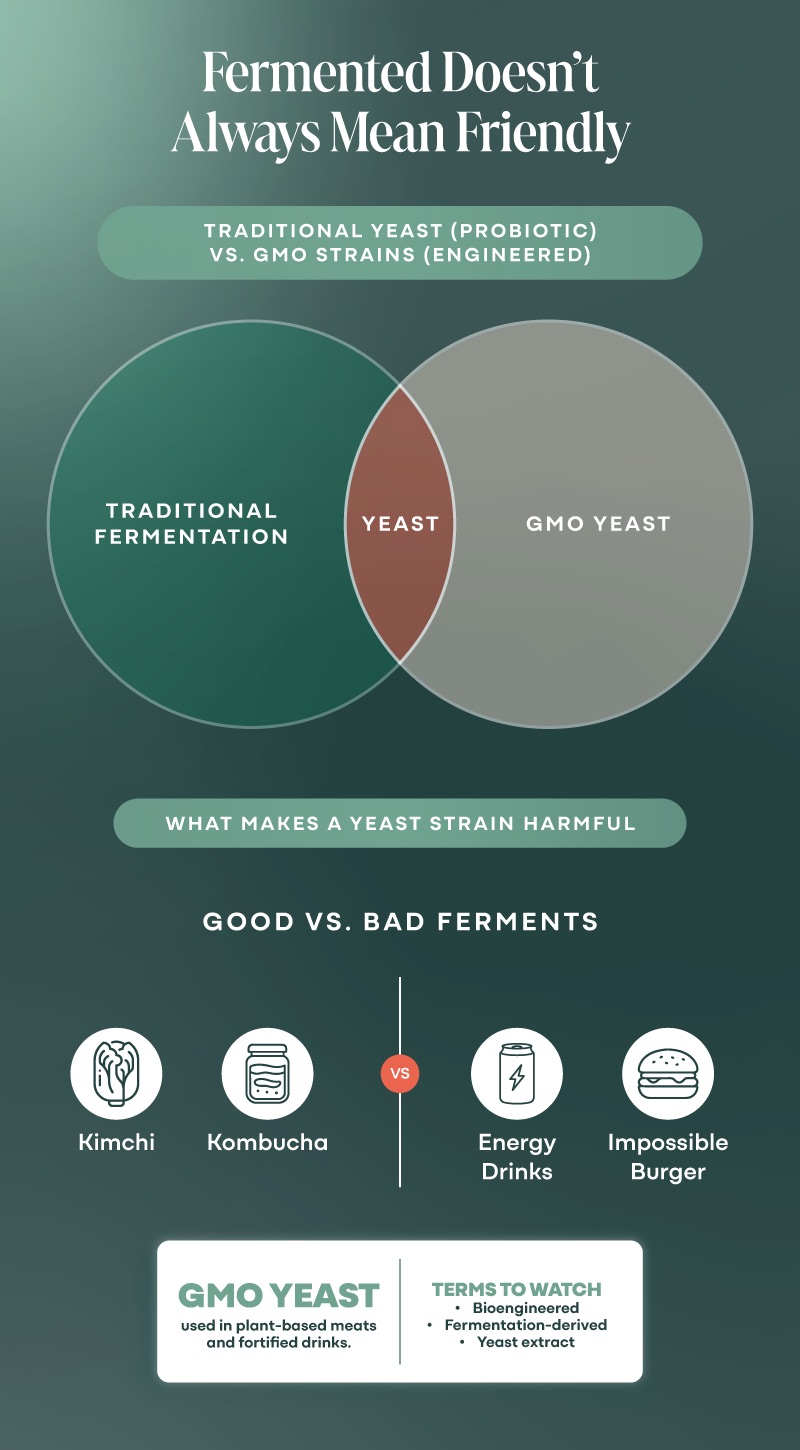
How to Reduce Your Exposure to GMO Yeast
You don’t have to ditch all your favorite foods overnight.
You do have to start noticing which ingredients your body is reacting to and give it the chance to heal by reducing incoming stressors.
Here’s how to start untangling GMO yeast from your daily life—one smart move at a time.
1. Become a Label Detective (and Know What to Flag)
Most products don’t say “GMO yeast” outright. But these terms often mean it’s hiding in there:
- “Natural flavors”
- “Yeast extract”
- “Fermentation-derived” anything
- “Vitamin B12” (especially cyanocobalamin)
- “Bioengineered food ingredients”
- “Protein isolate” or “heme”
Tip: If it’s ultra-processed, shelf-stable, or vegan with a long ingredient list—it’s worth a closer look. Especially snacks, supplements, or anything that “tastes like” meat, cheese, or vanilla.
2. Clean Up Your Supplement Shelf
GMO yeast loves to hide in your daily multi or “energy support” blend.
Here’s how to detox your stack:
- Switch from cyanocobalamin to methyl cobalamin or adenosyl cobalamin for B12
- Avoid yeast-derived B vitamins and “nutritional yeast” unless it’s certified non-GMO
- Choose brands that are transparent about their sourcing (look for organic, yeast-free, and third-party tested)
If you’ve reacted to probiotics, it may have been a genetically modified yeast strain (especially Saccharomyces cerevisiae blends that don’t list their origin).
3. Stick With Traditional Ferments—Not Franken-ferments
Not all fermentation is the enemy.
Choose:
- Raw sauerkraut
- Kimchi
- Kefir
- Coconut yogurt (unsweetened, live cultures)
Skip:
- Fermented “soy sauce flavor” packets
- Commercial vinegar blends
- Alcohol made with synthetic strains (many clear liquors, cheap wine)
Bonus tip: Some folks with histamine intolerance may still need to limit all ferments temporarily—but that’s a terrain issue, not a forever rule.

Trust Your Gut—Literally and Metaphorically
The truth is: We are several decades into a global food experiment that we didn’t consent to.
Yeast, once a simple ingredient, has been turned into a mini factory—genetically edited to produce whatever flavor and aroma, nutrient, or synthetic mimic the market demands.
And while that might be profitable for manufacturers, it’s creating ripple effects we’re only just beginning to understand.
If you’ve been living in a loop of trying everything and still feeling awful, reacting to “healthy” food and supplements, and feeling like no one believes how sensitive your body really is – then here’s what I want you to hear loud and clear:
- You’re not crazy.
- You’re not making it up.
- You’re early to the awareness party—and you’re leading the way for others.
The body doesn’t make mistakes.
It reacts because something – like GMO yeastie beasties – has been introduced and doesn’t belong.
So, what do you do?
You play health detective.
You lower your exposure.
You remove the barriers to healing.
You rebuild your internal terrain with reverence and consistency.
You trust your body—because it’s been trying to talk to you this whole time.
And if you get stuck?
You remember this: It’s not about being perfect.
It’s about showing up for yourself—again and again.
Because while healing isn’t linear, vibrant health is your birthright.
How We Can Help
Guiding people to reclaim their health and vitality is our greatest joy. Our entire practice is dedicated to supporting you to be who you really are, at home in your body, because your body is able to heal itself.
Book a CallFAQs
1. Is GMO yeast the same as nutritional yeast?
Not necessarily. Nutritional yeast can be made from GMO strains unless it’s certified non-GMO. Always read the fine print (or call the company, if you’re that brave).
2. Why is GMO yeast used in food and supplements?
It’s cheap, scalable, and makes it easy for companies to slap the word “natural” on lab-made ingredients. Great for profits—not great for your gut.
3. Where might I find GMO yeast in my diet?
Think: plant-based meats, “natural” flavors, energy drinks, synthetic vitamins, and even some probiotics. Especially anything that says “fermentation-derived.”
4. Is GMO yeast dangerous?
The FDA calls it safe, but there’s little long-term human data. Many sensitive folks are reporting flares, gut issues, and histamine chaos after exposure.
5. Does my favorite beer contain thiols, thiolized yeast, or omega strains? (We’re talking lager and pale ale beers.)
Yes, your favorite craft beers most likely contain thiols and omega strains. These GMO products work on the mash, malt and hops to maximize the aromatic thiol output. This increases the tropical fruit character (passion fruit, grapefruit, guava, and more) in the beer.
6. What are some craft brews that use thiolized yeast?
Some craft IPAs to watch out for include: Lunar Crush, Star Party, Phantasm Powder, Whirlpool, New Zealand Sauvignon, and Chico.

